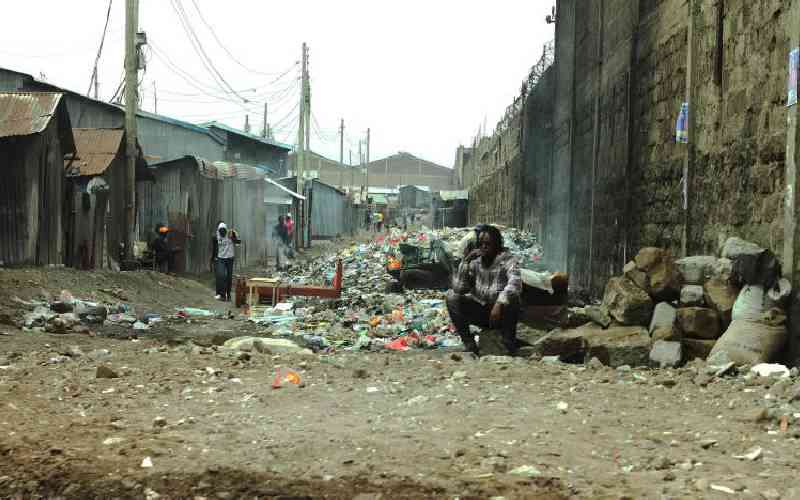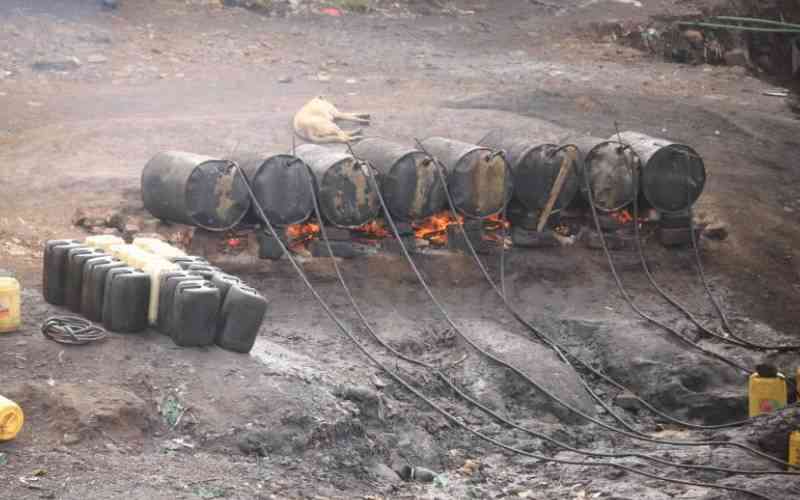By KENFREY KIBERENGE
Sometimes last year, Ms Sue Small, a school teacher in Surrey, England, visited Kenya as a volunteer language tutor at one of the informal schools in Nairobi’s Mukuru slums.
Small noticed that the pupils at Gatoto Primary School could not complete their homework on time and that they always came to school with watery eyes.
On inquiry, she realised that most of the pupils were doing their homework using tin lamps, which emitted a lot of smoke, hence the watery eyes.
In addition, some did not even do the homework because the price of kerosene was beyond the reach of most parents who rely on menial jobs for a living.
Most of the pupils at Gatoto live with their families in Mukuru Kwa Reuben slums, and rely on well-wishers to fund the school.
When she went back to England in October, last year, Small mobilised pupils at Felton Fleet School to do something to help children of Mukuru do their homework.
Car wash
She wanted to help the pupils have lights to use at night; the lamps though had to be friendly to their parents’ pockets, and their children’s eyes.
The pupils at Felton Fleet started fund raising by washing cars during their free time and charity for three months. They raised more than £3,000 (about Sh405,000).
They wired the money to d.light, another social enterprising idea born out of the Peace Corps in Benin, and the solar lights came to being.
On Wednesday, this week, the Gatoto Primary School pupils could not hide their joy, as they received the solar lanterns from d.light.
They were also keen to listen to letters written by their Felton Fleet school benefactors.
Shock was written all over their faces as they heard evidently remote stories about "ice-covered streets, minus-degrees temperatures and deer-rearing", among others.
A total of 440 lamps were bought using the proceeds with priority being given to the more than 240 pupils in Classes Eight and Seven. The school has 993 pupils.
The lamps are solar-powered and have the light akin to a fluorescent tube.
In their campaign to have kerosene tin lamps replaced with eco-friendly ones, medical experts have argued the former causes respiratory diseases.
Ten-year-old Caleb Kivindyo, a Standard Seven pupil at the school, narrated how they face a myriad problems, trying to keep up with their colleagues from well-to-do schools who have the luxury of electricity lights.
Stay informed. Subscribe to our newsletter
"My sister and I use kerosene lamps to do homework and it is not pleasant. At times, I came to school without having done my assignments when my parents could not buy paraffin or the little we got was ran out fast," he said.
He, however, expressed optimism that this would now be a thing of the past.
"Last year, I got 395 marks out of a possible 500. With this lamp, I’m confident that I’ll perform better this year and excel at the Kenya Certificate of Secondary Education examination next year," he said.
Gatoto Primary School manager, Betty Nyagoha, also hailed the gesture, saying she expects candidates to perform better in future.
"Pupils have been coming to school as early as 6am to complete their homework. Sometimes they stay on until late to study with the electricity available here," she said. She thanked the pupils from Felton Fleet School and d.light for coming to the aid of the Gatoto Primary School pupils.
"We are very grateful for the solar lanterns. The first batch will be distributed to Class Seven and Eight students as they prepare for the national exams," said Nyagoha.
Mr Paul Njuguna, the brand manager of d.light, said each of the lamps has a lifespan of eight years, and when fully charged, it can light for up to four hours.
Kerosene lamps
"All you need to do is place the lamp under the sun in the morning and use it in the evening for up to four hours. When there is no sun, the day light can still charge it," explained Njuguna.
He exuded confidence that the lamps would reduce the frequency of fires in the slums caused by widespread use of kerosene lamps.
d.light provides solar powered lanterns in schools at subsidised prices, as part of its mission to improve the lives of 100 million people by 2020, beginning by replacing every kerosene lamp with revolutionary solar lighting solutions.
Interestingly, the idea was borne from one of its founders, Sam Goldman, a social entrepreneur in 2007, in circumstances almost similar to Small’s short stint in Kenya.
During Goldman’s Peace Corps service in Guinagourou, Benin, the son of one of his neighbours was badly burned by a kerosene lamp.
After witnessing the harmful effects of kerosene lamps firsthand, Goldman vowed to find a way to provide people in the developing world with safer, brighter, and more affordable lighting.
Upon his return to the US, he enrolled in Stanford Business School and it was there that d.light design was born.
The initiative has raised over $11 million in funding, started the India sales and marketing division, and overseen multiple product launches including the award-winning S250 and S10 solar lights.
As a result of his leadership, Goldman has been selected as an Ashoka Fellow and World Economic Forum Young Global Leader.
Last September, he won the Shriver Award at the National Peace Corps Association’s The Promise of the Peace Corps Gala in September.
 The Standard Group Plc is a
multi-media organization with investments in media platforms spanning newspaper
print operations, television, radio broadcasting, digital and online services. The
Standard Group is recognized as a leading multi-media house in Kenya with a key
influence in matters of national and international interest.
The Standard Group Plc is a
multi-media organization with investments in media platforms spanning newspaper
print operations, television, radio broadcasting, digital and online services. The
Standard Group is recognized as a leading multi-media house in Kenya with a key
influence in matters of national and international interest.
 The Standard Group Plc is a
multi-media organization with investments in media platforms spanning newspaper
print operations, television, radio broadcasting, digital and online services. The
Standard Group is recognized as a leading multi-media house in Kenya with a key
influence in matters of national and international interest.
The Standard Group Plc is a
multi-media organization with investments in media platforms spanning newspaper
print operations, television, radio broadcasting, digital and online services. The
Standard Group is recognized as a leading multi-media house in Kenya with a key
influence in matters of national and international interest.








